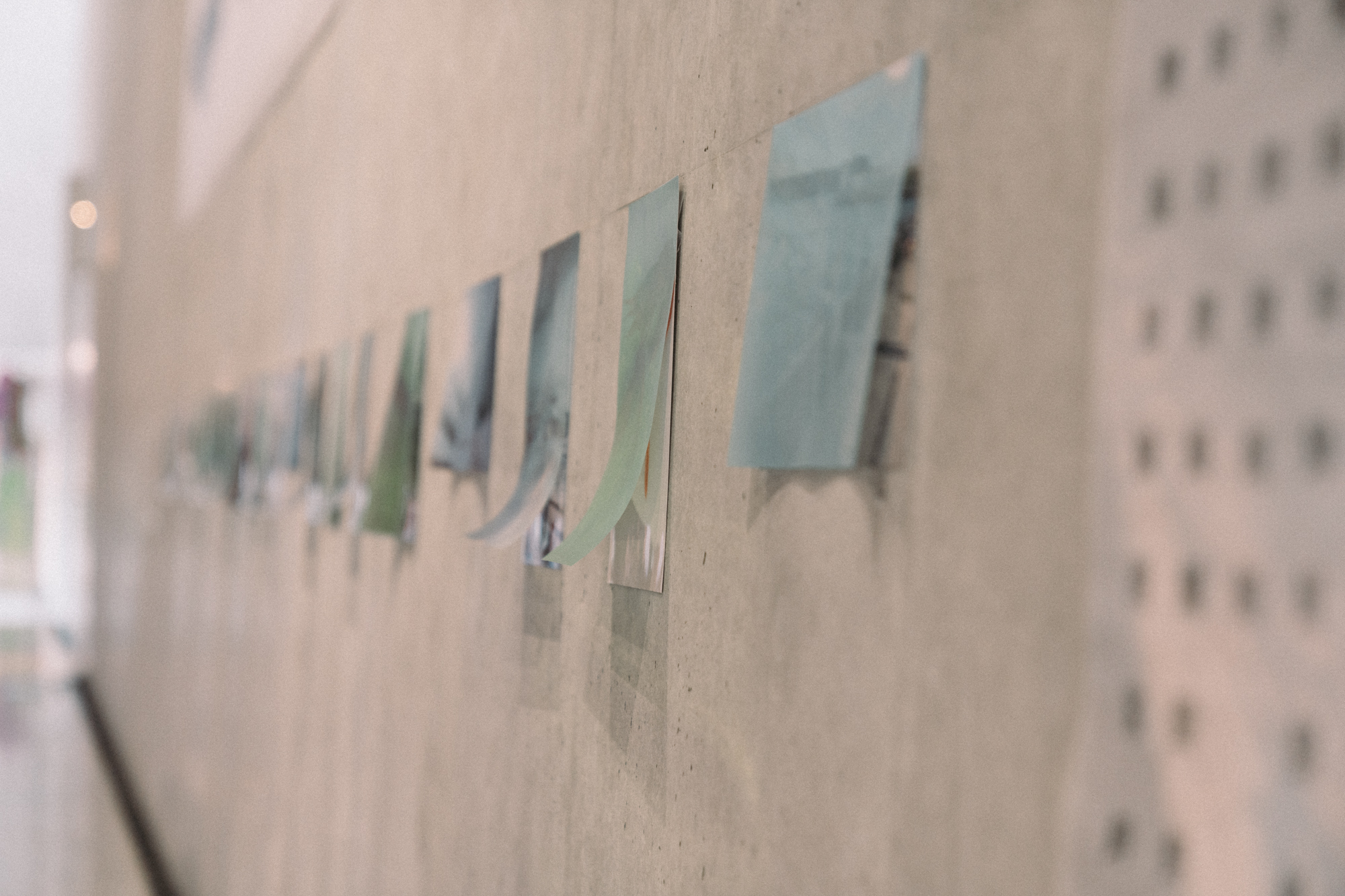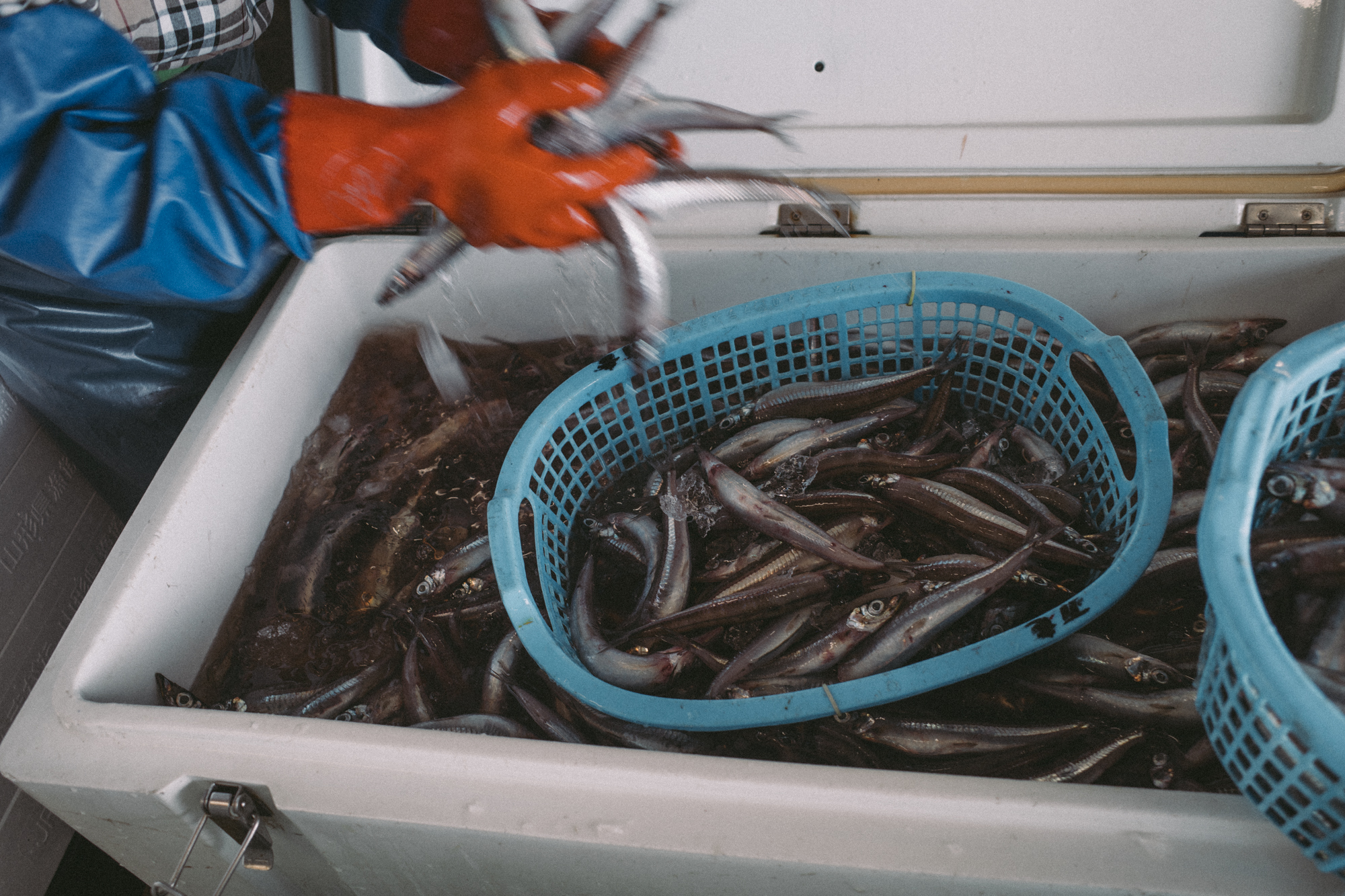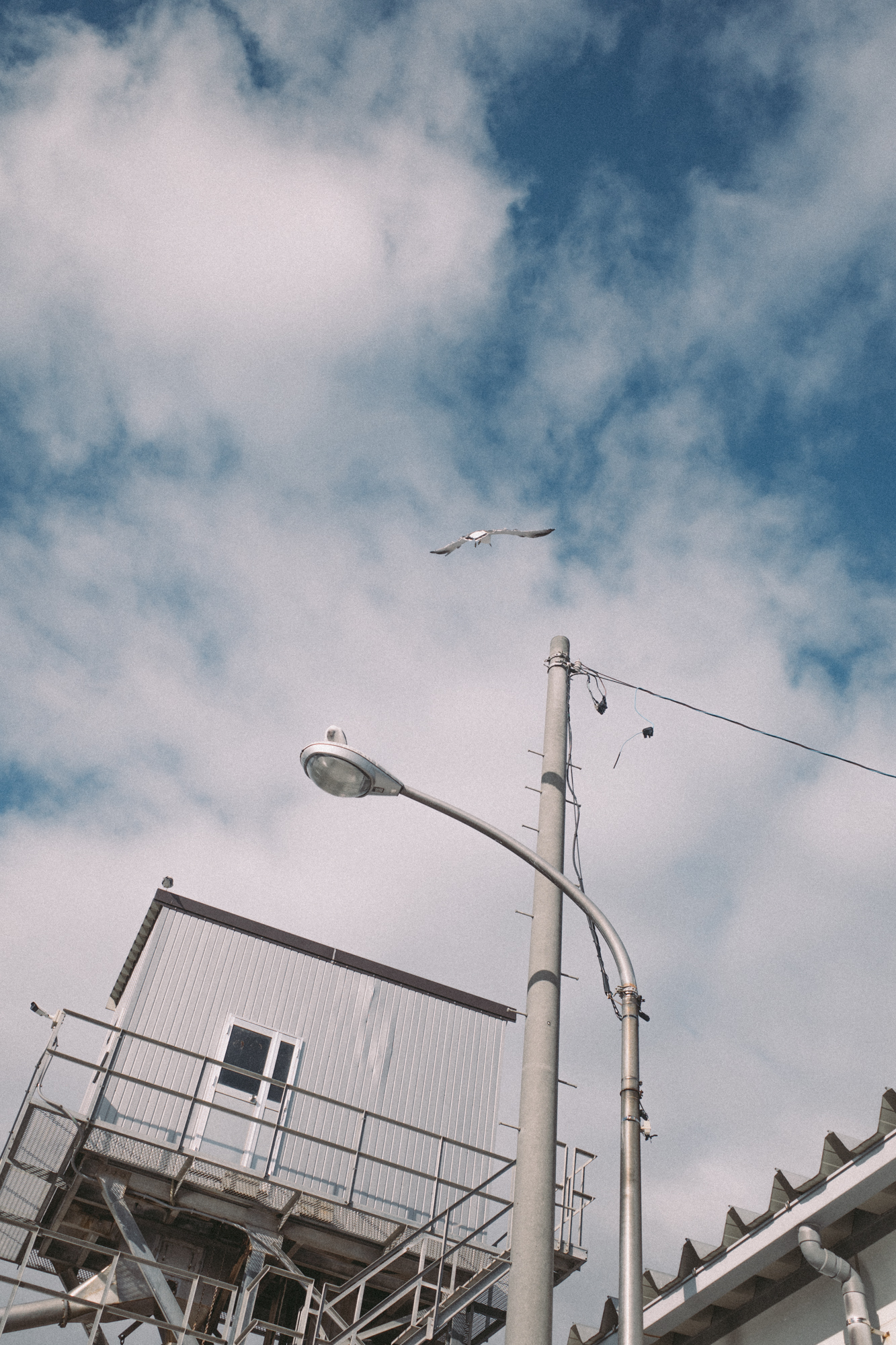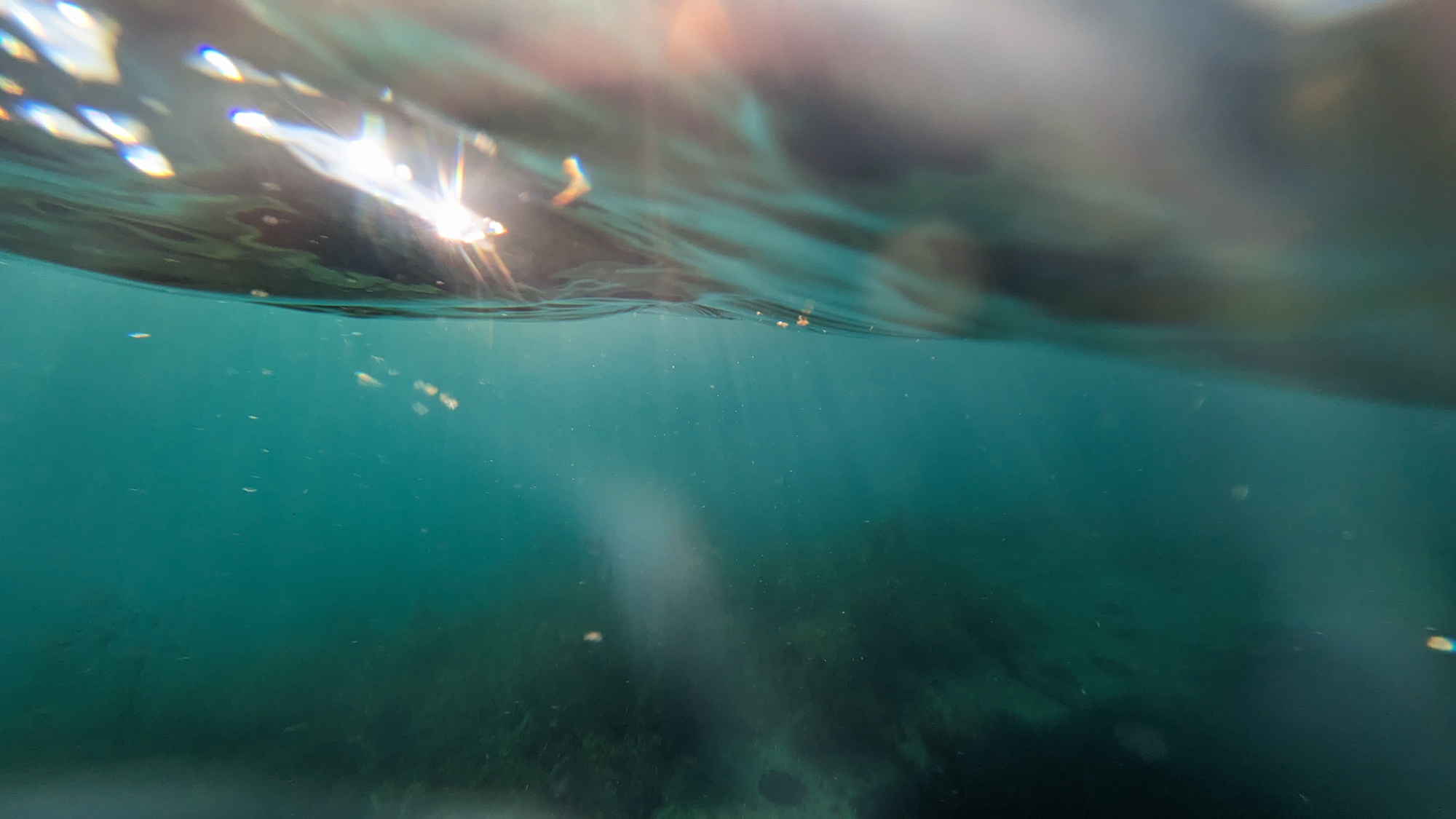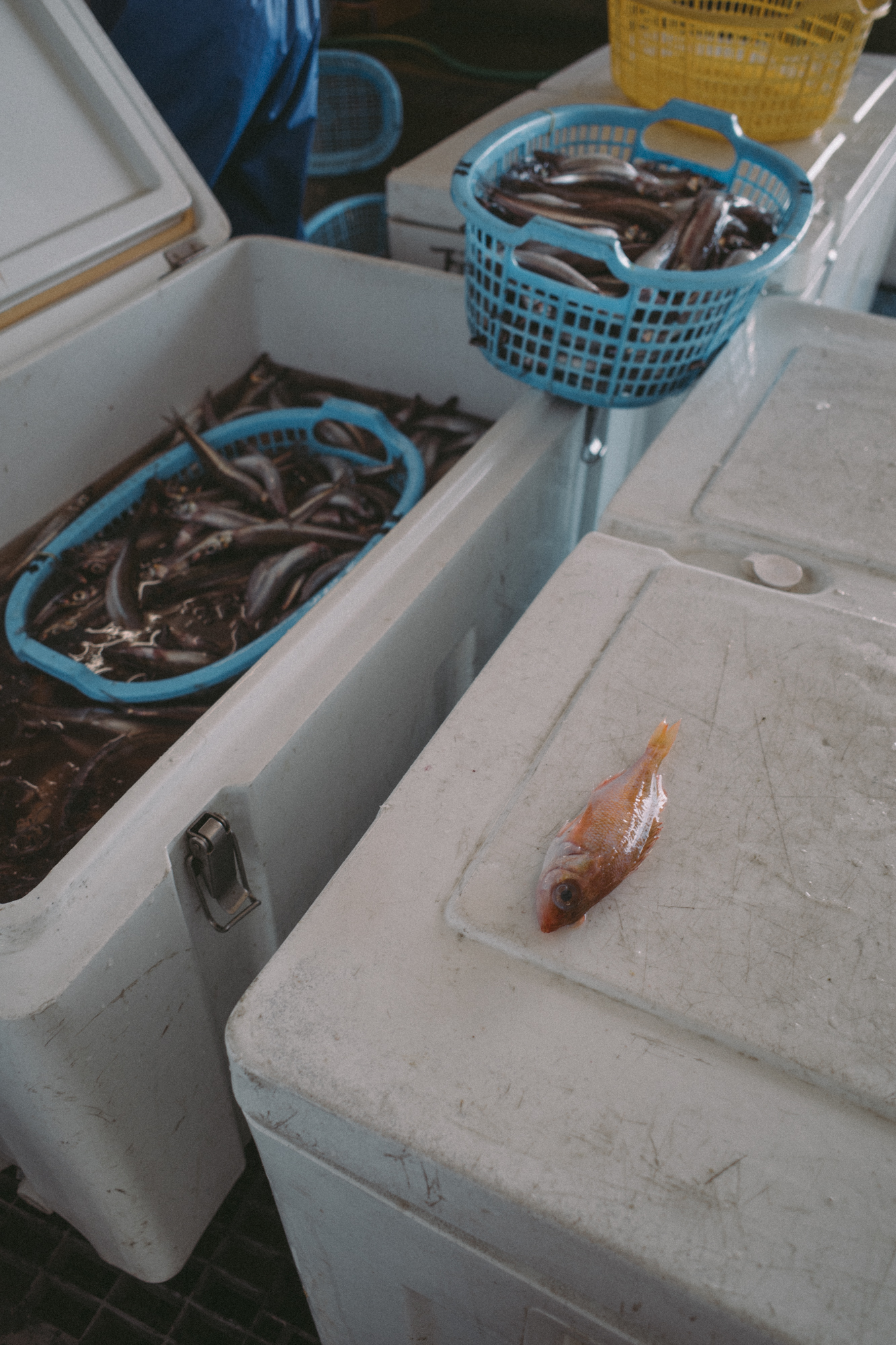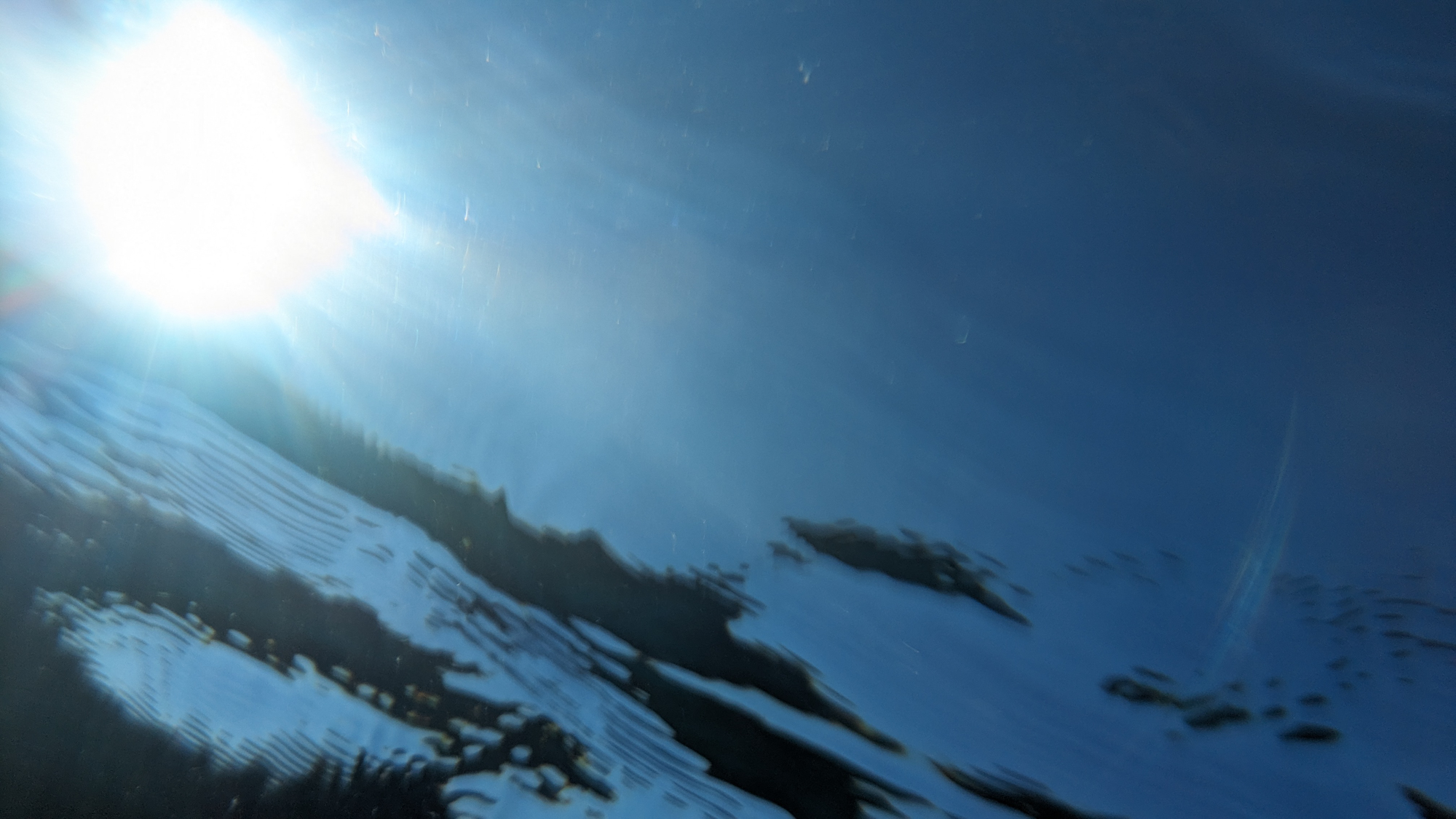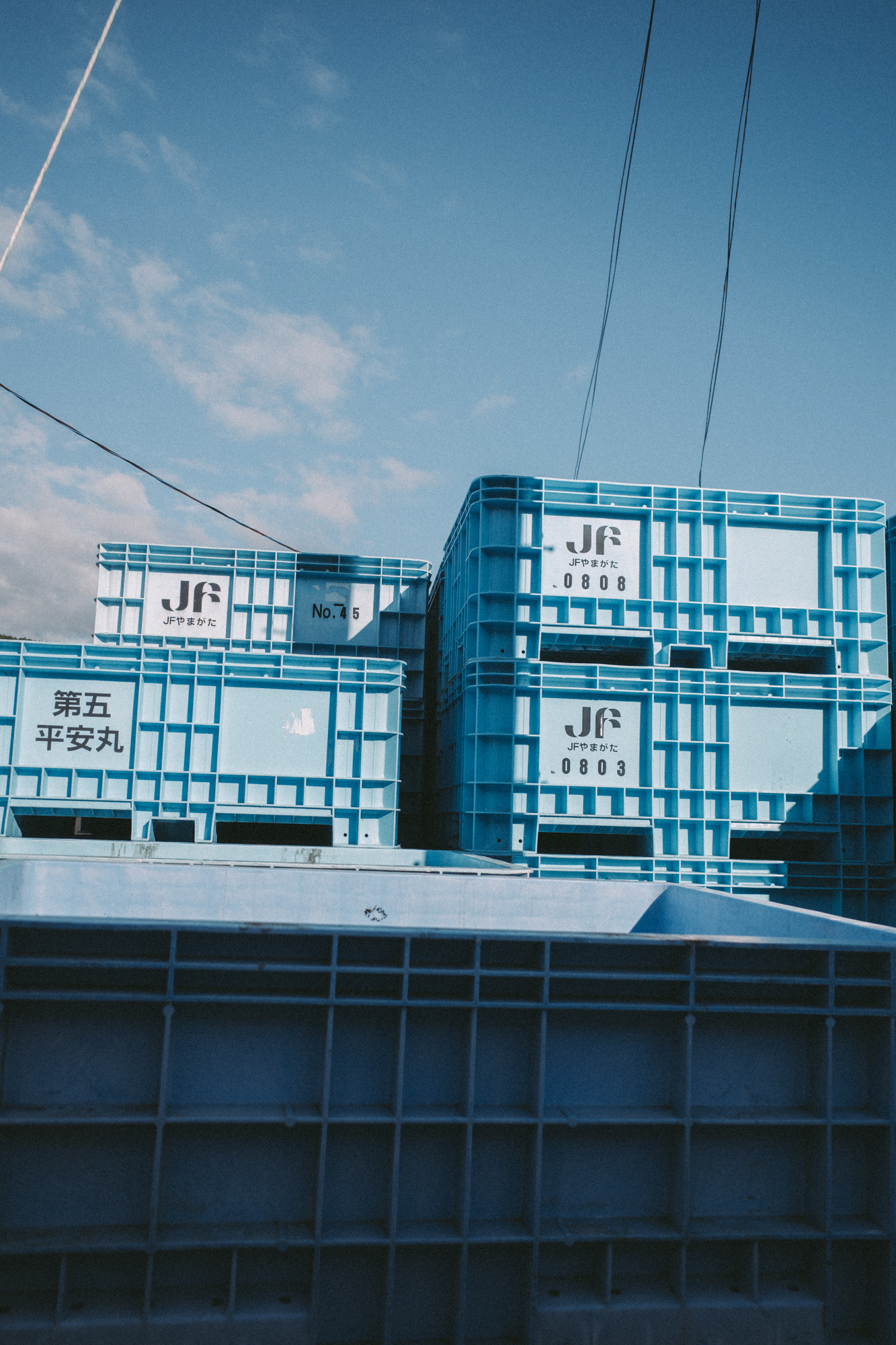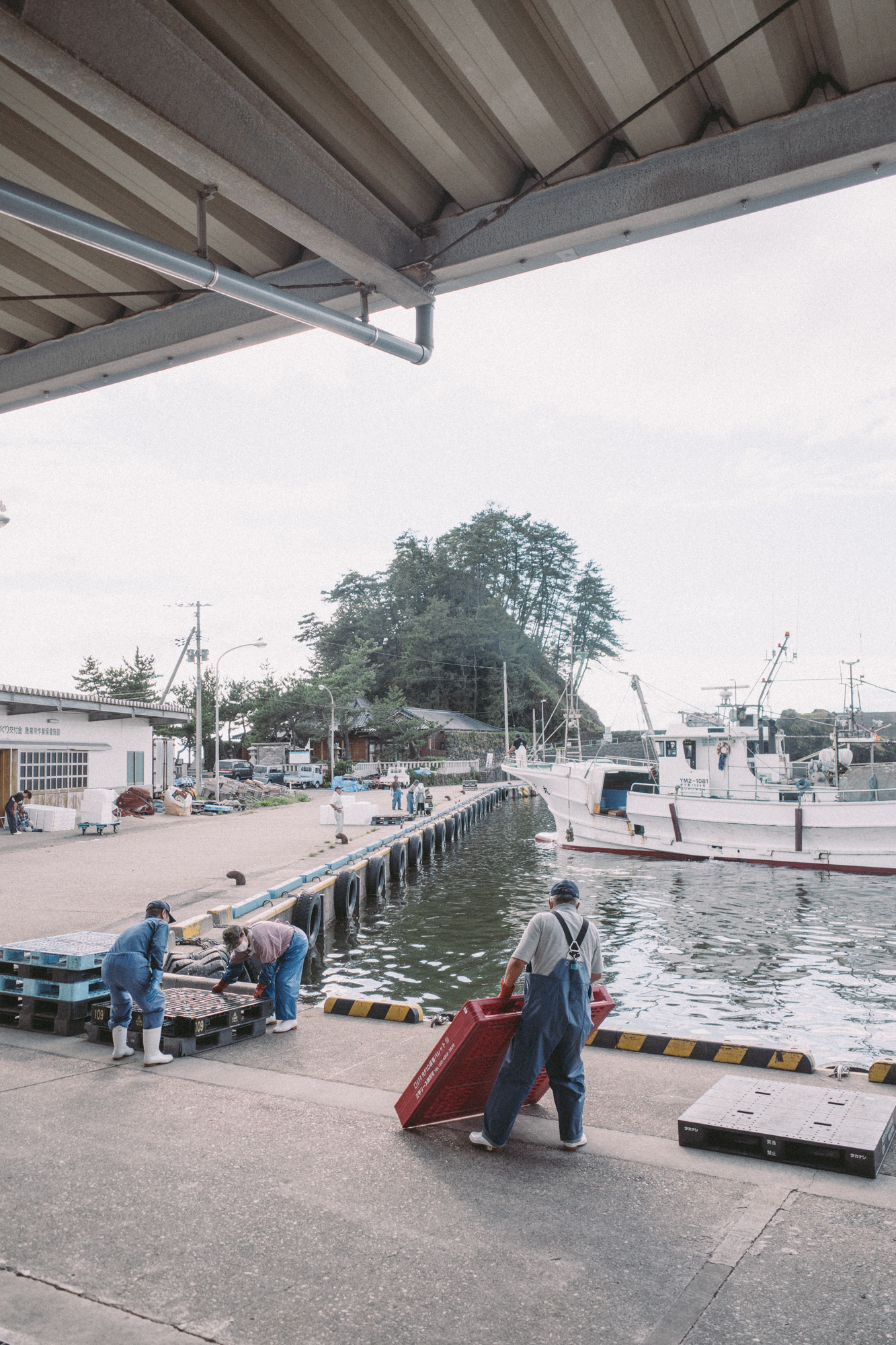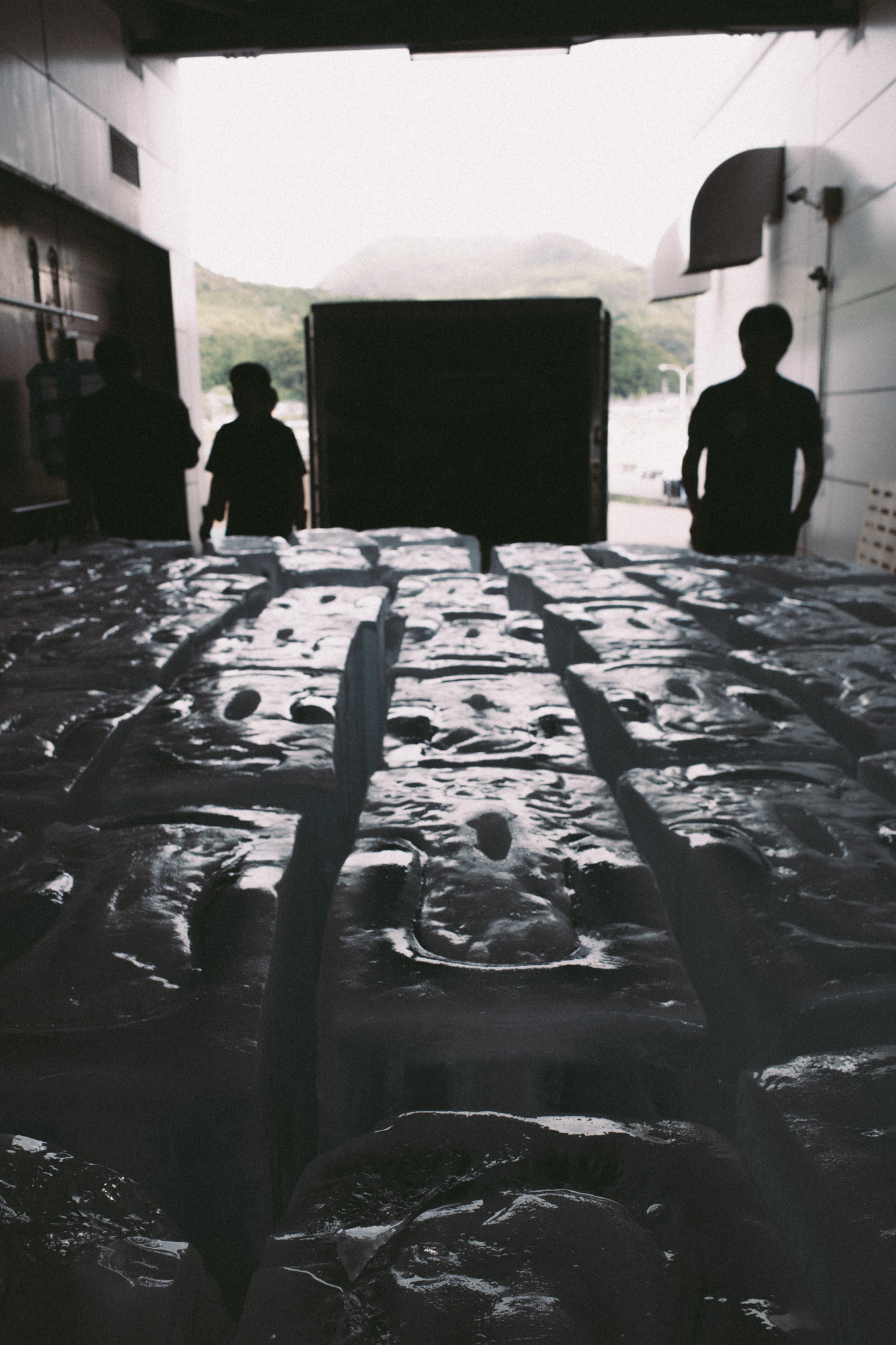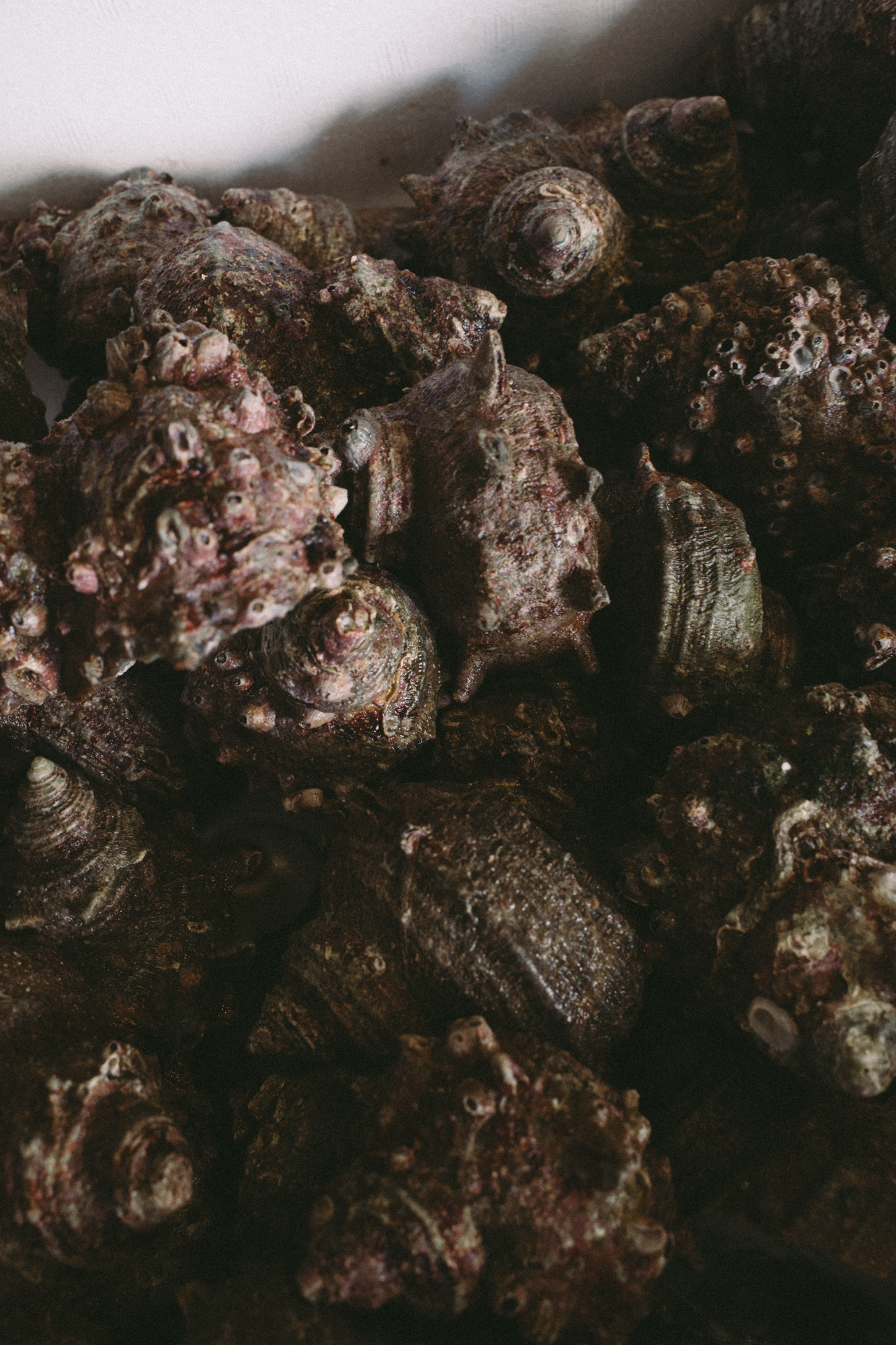漁業と解像度
漁業の世界には、まだ多くの人に知られていない魅力が溢れています。例えば、魚が基本的に左を向いているのは、右利きの人々が多いため、エラに包丁を入れやすくし、提供し口に魚が入るまで美しく見せるための工夫です。このような日常的な作業が漁業の興味深い側面を形成しており、私はその魅力を感じました。
この作品は、海の写真をトレーシングペーパーに印刷し、それを別の写真に重ねることで、伝わりにくいこの側面を視覚的に表現しました。
この作品集では、漁業の細やかな点(解像度)を高めるとともに、魚拓と写真の類似点に焦点を当てています。これらのメディアは実物の形を捉え継続的に視覚化させます。
また、写真の境界についての探究も行っています。大きな紙に印刷された切り抜かれた写真の中から、どの部分を「写真」として認識するのかに焦点を当てています。この方法は、私たちが写真をどのように定義し、認識するかについて考えるきっかけを提供します。
この作品集を通じて、漁業の微細な側面を探りつつ、写真の解像度についても深い考察を行いました。これにより、視覚的表現の新たな可能性を追求し、漁業というテーマを用いて写真メディアの概念を拡張することを目指しました。
he world of fishing is filled with charms that are still unknown to many. For instance, the practice of fishes typically facing left is a thoughtful adaptation for right-handed people, making it easier to cut through the gills and present the fish beautifully until it reaches the consumer’s mouth. Such everyday practices form the intriguing aspects of fishing, and I found myself captivated by these charms.
In this work, I printed photos of the sea on tracing paper and layered them over other photos to visually express these subtle aspects of fishing that are hard to convey.
This collection focuses on enhancing the finer details (resolution) of fishing while also concentrating on the similarities between fish printing (Gyotaku) and photography. Both mediums capture and visually perpetuate the actual form of their subjects.
Furthermore, I am exploring the boundaries of photography. By focusing on which parts are recognized as ‘photography’ within large paper prints with cut-out sections, this method invites contemplation on how we define and perceive photographs.
Through this collection, I delved into the intricate aspects of fishing while also deeply considering the resolution of photography. This approach aims to explore new possibilities in visual expression and to expand the concept of the photographic medium using the theme of fishing.
